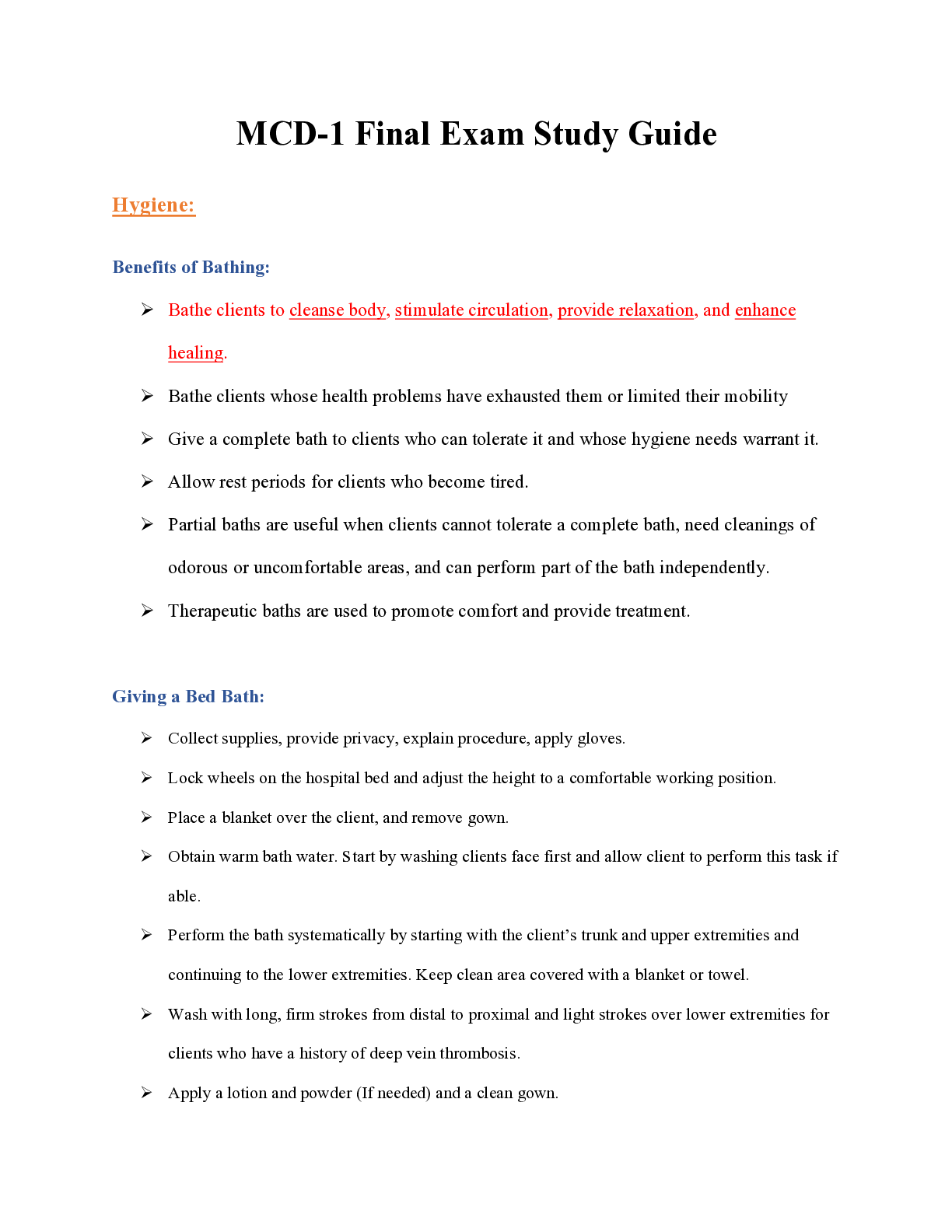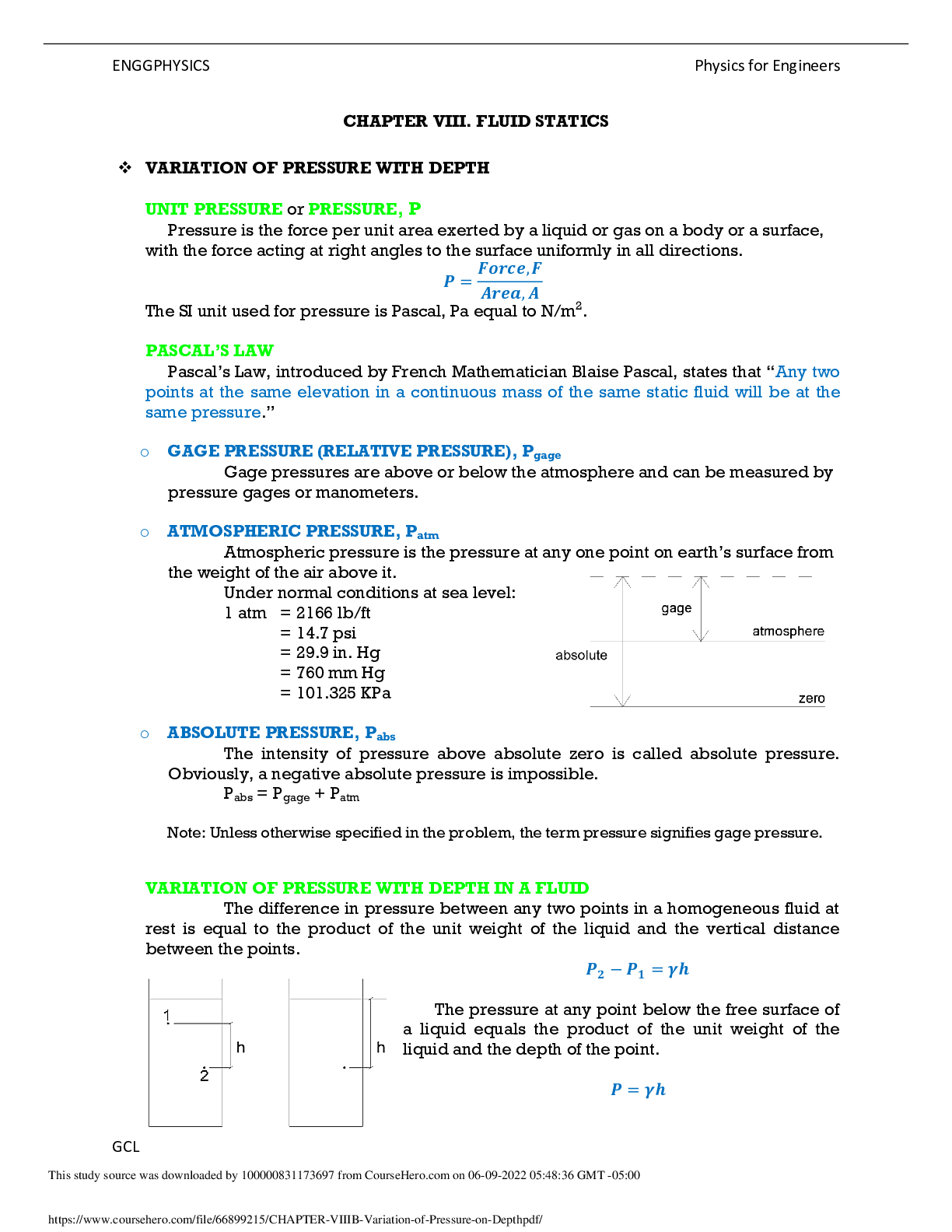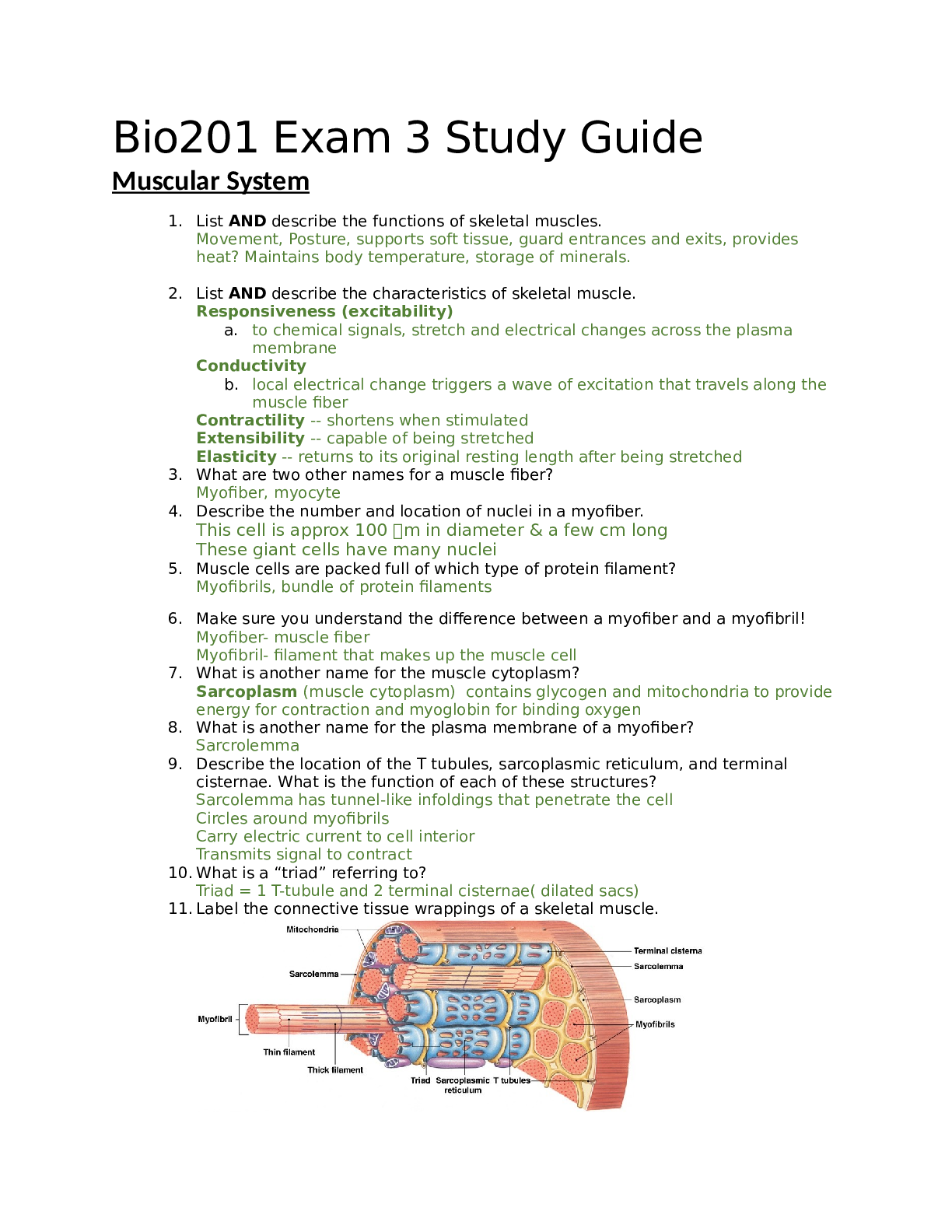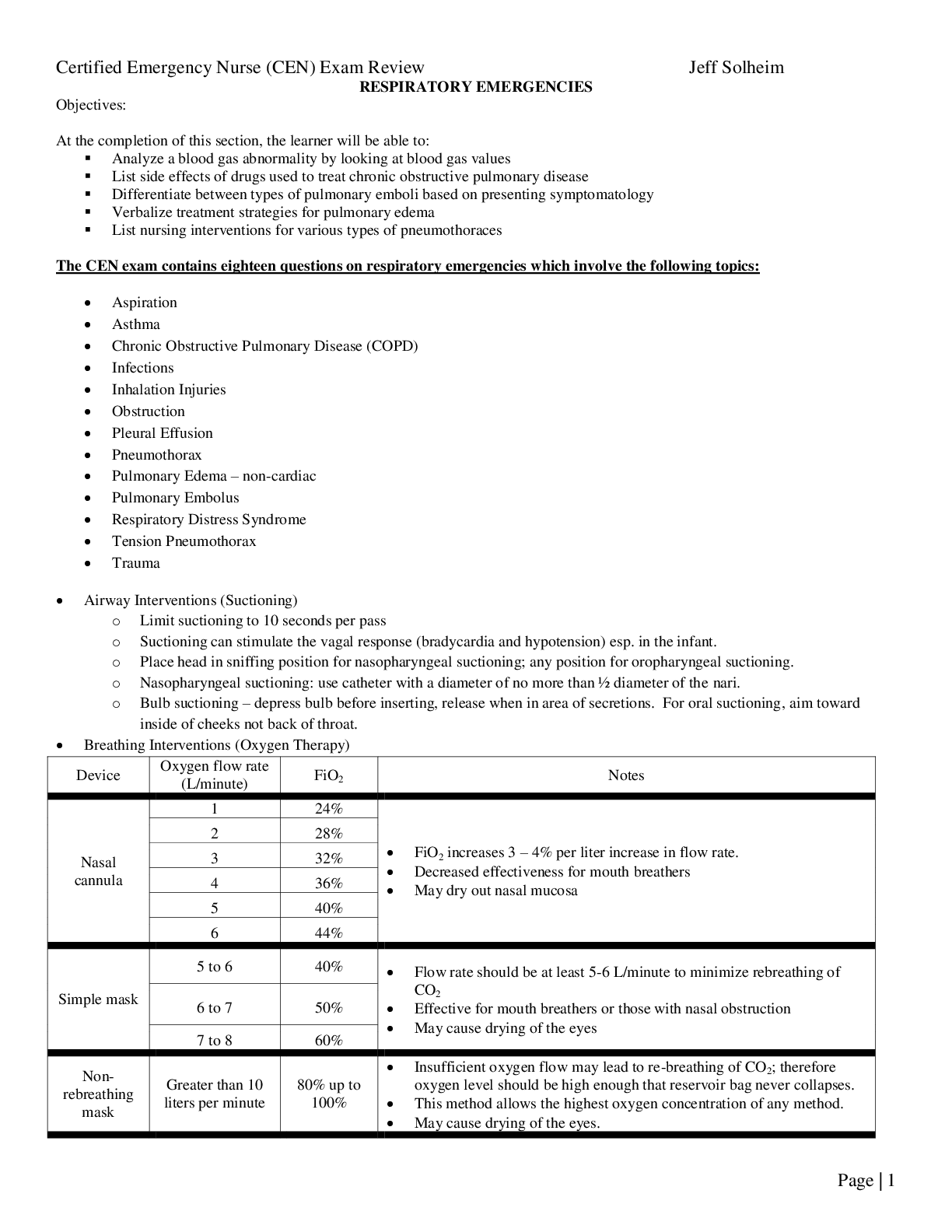*NURSING > STUDY GUIDE > Certified Emergency Nurse (CEN) Exam Review SHOCK (All)
Certified Emergency Nurse (CEN) Exam Review SHOCK
Document Content and Description Below
At the completion of this section, the learner will be able to: Define shock Differentiate the signs of compensatory shock from decompensatory shock List the three forms of distributive... shock The CEN exam contains nine questions on shock which involve the following topics: Cardiogenic shock Distributive shock (e.g. anaphylactic, septic, neurogenic shock) Hypovolemic Obstructive (e.g. pericardial tamponade, tension pneumothorax) Shock (not specific) Shock (lack of oxygen to the tissues) o Hypovolemic shock – Decreased cellular perfusion secondary to lack of circulating volume o Cardiogenic shock – Decreased cellular perfusion secondary to failure of the central pump o Distributive shock – Decreased cellular perfusion secondary to maldistribution of the oxygen to the periphery o Obstructive shock – Decreased cellular perfusion secondary to obstruction of blood into or out of the ventricles (e.g. pulmonary embolism, pericardial tamponade, tension pneumothorax) Obstructive shock Type of obstruction Treatment Pregnancy Roll the patient to her side Tension pneumothorax Chest tube/needle decompression Cardiac tamponade Pericardiocentesis Pulmonary embolism Thrombolytics Aortic aneurysm Surgical intervention Aortic stenosis Surgical intervention Excessive positive end expiratory pressure (PEEP) Readjust ventilator settings Hypovolemic shock o Early (compensatory) shock Sympathetic nervous system (adrenergic system) Parasympathetic nervous system (cholinergic system) Alpha receptors Vasoconstriction Glucogeonolysis Diaphoresis Vasodilation Gluconeogenesis Dry skin Beta-one receptors heart rate contractility automaticity heart rate contractility automaticity Beta-two receptors respiratory rate Bronchodilation respiratory rate Bronchoconstriction Certified Emergency Nurse (CEN) Exam Review Jeff Solheim 2 | P a g e Definition: Agonist – St imulates a system Antagonist – Diminishes the response of a system Late (decompensatory shock Inflammatory mediators are released in response to either foreign invasion of tissue or tissue damage. They have three main courses of action: Vasodilation Increased capillary permeability Increased coagulation [Show More]
Last updated: 1 year ago
Preview 1 out of 13 pages
Instant download
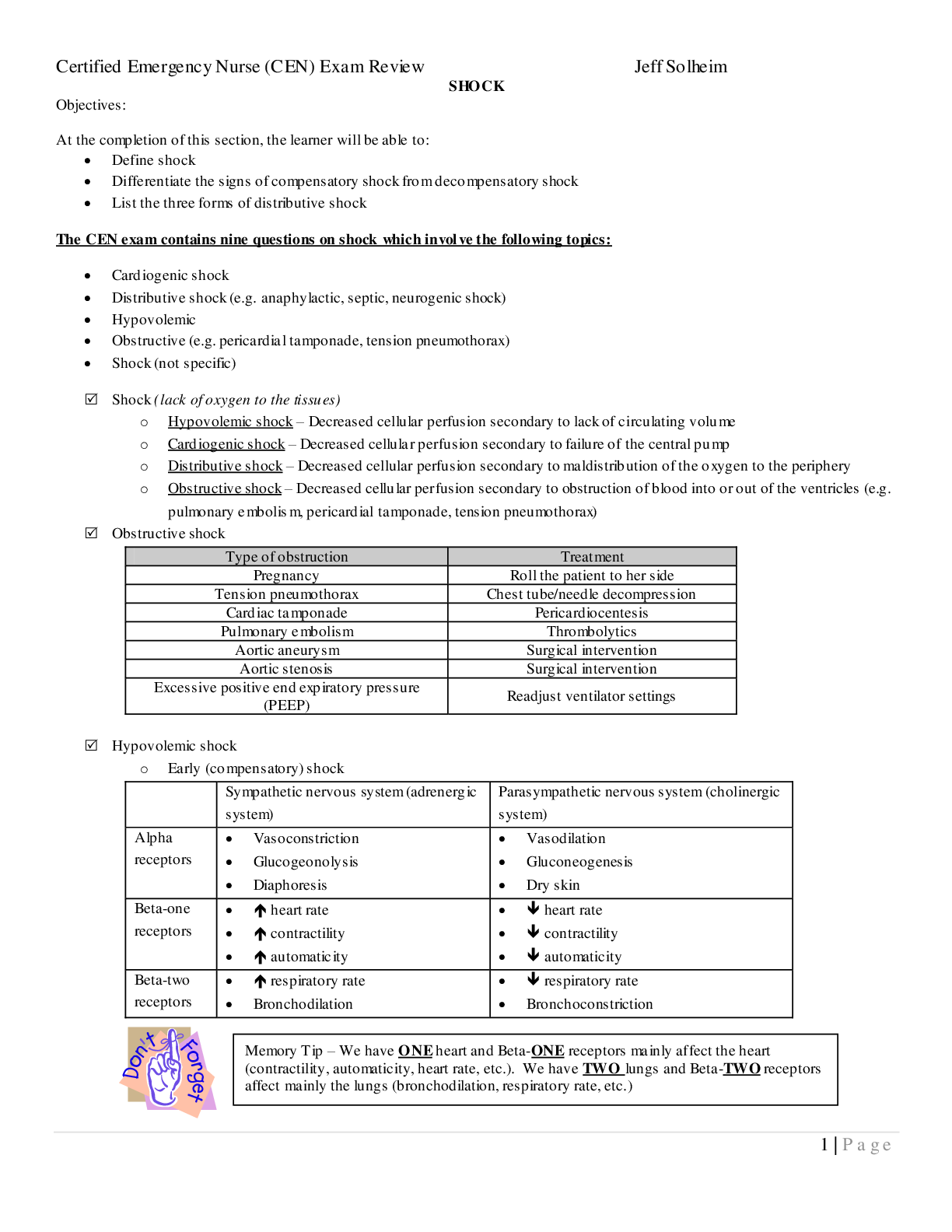
Buy this document to get the full access instantly
Instant Download Access after purchase
Add to cartInstant download
Reviews( 0 )
Document information
Connected school, study & course
About the document
Uploaded On
Jul 26, 2022
Number of pages
13
Written in
Additional information
This document has been written for:
Uploaded
Jul 26, 2022
Downloads
0
Views
37

